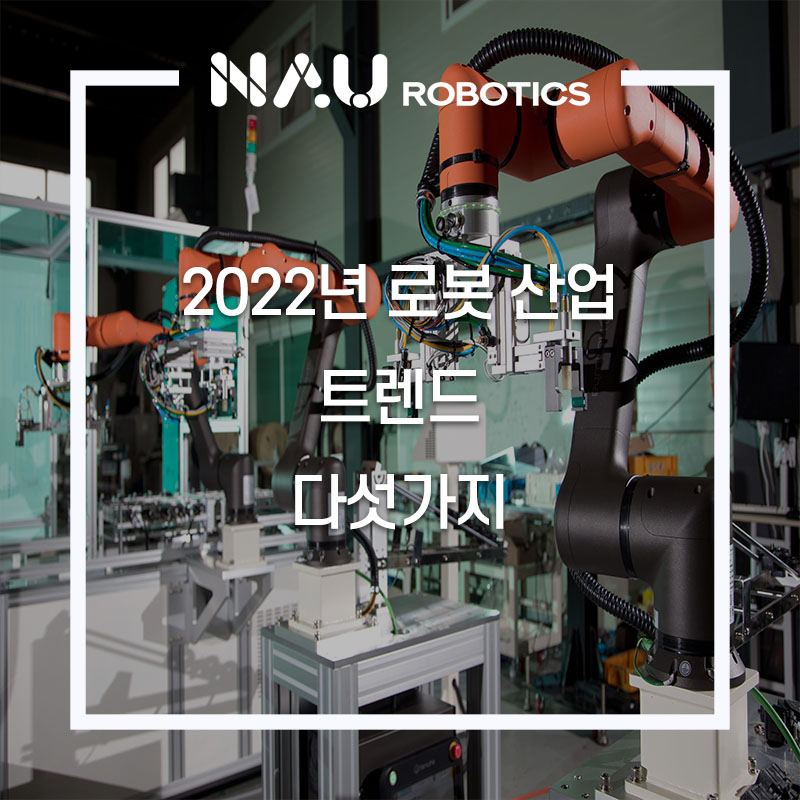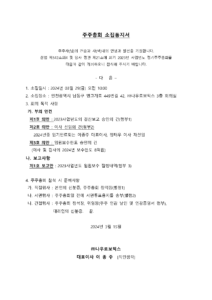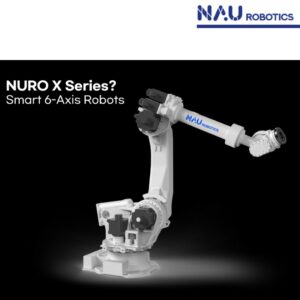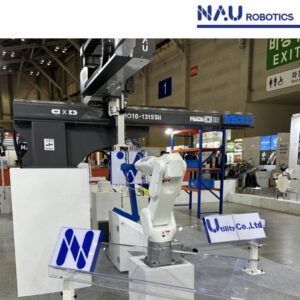오랜만에 또 한편의 외신 기사를 들고 찾아왔습니다! 우리 일상에서 로봇은 갈수록 더욱 더 빠르게 스며들고 확산되고 있는데요. 로봇산업에도 여러가지 트렌드가 있습니다! 갈수록 확대되고 빨라지고 있는 로봇 시장에서 올해 눈여겨 봐야할 포인트는 어떤 것들이 있을까요? 한 편의 외신 기사를 통해 오늘 소개해 드리도록 하겠습니다!
2021 was a transformative year in development, adoption, funding, and M&A activity in the robotics industry. 2022 is off to a robust start and all signs point to rapid robotics growth over the next decade. Below are five key robotics trends to watch in 2022.
(K) 2021년에는 로봇 산업에서 다양한 개발과 적용, 펀딩, M&A 등과 같은 다양한 활동들이 많았다. 2022년도 순조로운 출발을 보이고 있는 가운데 앞으로 10년동안 로봇이 더욱 빠르게 성장할 것으로 관측된다. 다음은 2022년에 로봇분야에서 주목해야할 5가지 트렌드를 소개한다.

Growing Investment in Robotics Companies
로봇기업에 대한 투자 증가
(E) Investors continue funding the latest robotics innovations in various industries, including the medical, manufacturing, logistics, hospitality, and automotive sectors. With plenty of cash in the market, venture capital (VC), private equity (PE), and strategic investors aim to capitalize on and steer development of disruptive robotics technologies. Likewise, labor shortages and disrupted supply chains are fueling immediate demand. According to Fortune Business Insights, the global industrial robots market is expected to reach $31.13 billion by 2028, up from $14.61 billion in 2020
(K) 투자자들이 의료, 제조, 물류. 호스피탈리피, 자동차 등과 같은 산업분야에서 최신 로봇 기술을 적용하기 위해 많은 자금을 지원하고 있다. 시장에 현금이 많은 벤처캐피탈, 사모펀드, 전략 투자자들이 로봇 기술 개발에 많은 관심을 이를 주도하고자 하고 있다. 마찬가지로 노동력 부족과 공급망의 문제 등으로 인해 로봇에 대한 수요는 더욱 가속화 되고 있다. 포춘 인사이트에 따르면 세계 산업용 로봇 시장은 2020년 146억 1000만달러에서 2028년에는 311억 3000만 달러로 커질 것으로 보고 있다.

Intellectual Property (IP) Is Critical for Robotics Innovations
지적재산권이 로봇 기술 혁신에 중대한 영향을 주고 있다
(E) Patents, trade secrets, and other IP continue to be essential tools for fueling growth in the robotics industry. Robust IP protections encourage companies to invest in R&D and offer additional tools to help innovative companies maintain a competitive edge. Further, robotics investors view the exclusivity afforded by IP as a valuable asset since barriers to entry often translate into greater market share. This in turn helps companies attract funding and increase their valuations. Likewise, IP protections are driving an uptick in industry partnerships, lessening the risk of sharing valuable technology and often allowing the parties to benefit from each other’s exclusivity shields for background technology incorporated into joint ventures and collaborations. Savvy robotics companies are building strong patent portfolios to differentiate themselves from competition. Strategic companies are also increasingly leveraging design patents to protect the “look and feel” of robots and user interfaces in addition to the “how it works” protections afforded by utility patents.
(K) 특허, 영업 기밀 및 기타 IP 등은 로봇산업을 촉진하는 역할을 한다. 강력한 IP 보호를 통해 기업들이 R&D에 더욱 투자할 수 있도록 하며 혁신적인 기업이 경쟁력을 유지할 수 있도록 지원하는 추가 도구를 제공한다. 또한 로봇 투자자들은 IP가 제공하는 배타성을 가치있는 자산으로 보고 있다. 이는 기업들이 자금을 유치하고 가치를 높이는데도 도움이 된다. 마찬가지로 IP 보호는 산업 파트너십의 상승을 촉진하고 중요한 기술이 빠져나갈 수 있는 위험을 줄이고 당상자들이 공동벤처와 협업해 통합된 백그라운드 기술에 대한 보호로부터 이익을 얻을 수 있다. 또한 유망한 로봇 회사들은 경쟁사들과 차별화하기 위해 자신들만의 특허 포트폴리오를 구축하고 있다. 아울러 전략적으로 특허가 제공하는 작동방식에 대한 것에 뿐만 아니라 로봇과 사용자 인터페이스의 디자인을 보호하기 위해 디자인 특허를 더 많이 출원해 가고 있다.
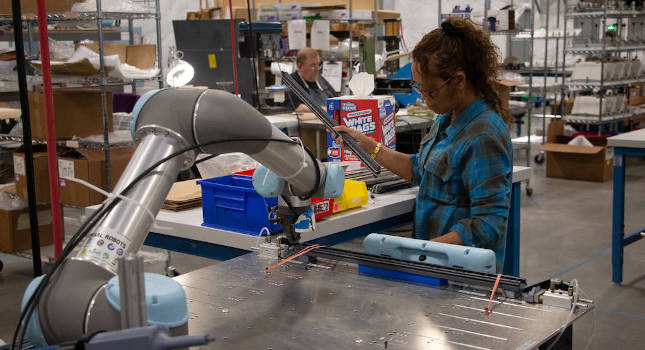
Cobots and Assistive Robots Take Center Stage in the Workplace
협동로봇과 보조로봇들이 업무공간에서 핵심적인 역할을 한다
(E) Many companies dream of full automation, but the reality is full automation can be prohibitively expensive and there are many tasks robots cannot perform as well as humans at this stage. Thus, innovative companies are seeking solutions that leverage the best of what humans and robots have to offer.
(K) 많은 기업들이 완전 자동화 구현을 희망하지만 현실적으로 많은 비용이 발생하며 현재 인간의 작업능력보다 더 뛰어난 로봇은 많지 않다. 그렇기 때문에 혁신적인 기업들은 인간과 로봇을 적절하게 배치해 활용하는 해결책을 이용한다.
(E) For example, order fulfillment centers are equipping warehouse workers with robotic exosuits to augment human mobility. These assistive devices help stabilize joints and offload lifting and carrying motions, thereby helping prevent injuries and improve worker endurance. According to Wintergreen Research, the exoskeleton wearable robots market is expected to reach $5.2 billion by 2025, up from $130 million in 2018
(K) 예를 들어 주문이 들어온 직후 창고 직원에게 웨어러블 로봇(로봇 수트)를 제공해 사람들의 이동성을 높인다. 이런 보조장치는 관절을 안정시키고 리프팅 및 운반동작을 줄여 부상을 방징하고 작업자들의 내구성을 향상시킨다. 윈터그린 리서치에 따르면 외골격 웨어러블 로봇 시장은 2018년 1억 3천만 달러에서 2025년까지 52억 규모로 늘어날 전망이다.
(E) Companies are also looking to cobots (robots that work alongside humans) to improve efficiency and safety by taking over boring, dangerous, or dirty jobs. For example, pick and place cobots are easy to integrate into existing operations and assume the mundane task of sorting and packaging various goods. Cobots are also leveraging advanced imaging and sensor systems to perform robust quality control inspections in manufacturing settings. The use of industrial robots in factory settings nearly doubled over the past 5 years globally[3] and cobots are expected to account for 34% of all robot sales in North America by 2025 compared with 3% in 2017[4].
(K) 기업들은 반복적이면서 위험한 일들에 대한 효율성과 안전을 위해 협동로봇 도입을 늘리고 있다. 예를 들어 픽업로봇은 기존 작업에 대한 통합하기 쉽고 다양한 상품을 분류하고 포장하는 반복적인 업무를 담당한다. 또한 협동로봇은 센서 시스템 등을 활용해 품질 관리 검사 등을 수행한다. 산업용 로봇은 전 세계적으로 지난 5년 동안 거의 두 배 가량 증가했으며, 협동로봇은 2017년 3%에서 2025년까지 북미 로봇 시장의 전체 판매량 중 34% 가량 될 것으로 예상된다.
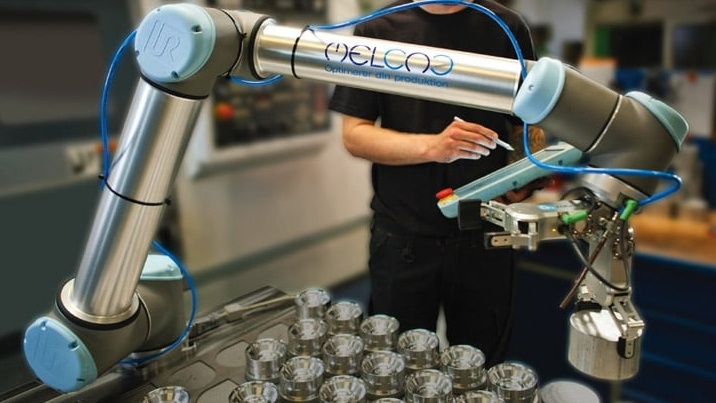
Progress in Robot Interoperability
로봇 상호운용의 발전
Interoperability amongst robots will be as much of a focus as interoperability between cobots and humans as robotics adoption becomes more widespread. Few companies source all of their robotic platforms from a single developer and thus have trouble getting these diverse platforms to communicate and work together. The result is often highly-segmented operations, which limits the potential gains in efficiency. Customer demand will drive the industry to set standards and utilize open architectures to facilitate interoperability across robotic platforms, much like the computer and telecom industries.
(K) 로봇 도입이 더욱 확신되면서 로봇간의 상호운용은 로봇과 인간간의 상호운용성만큼이나 주목받을 전망이다. 모든 로봇 플랫폼을 단일 개발자로부터 조달해 이런 다양한 플랫폼이 서로 통신하고 함께 작동하는데 어려움을 겪지 않도록 해야한다. 그 결과 고도로 세분화된 작업이 종종 발생해 이로 인해 효율성의 잠재적 이득이 제한된다. 고객의 요구로 인해 업계는 표준을 설정하고 개방형 구조를 통해 컴퓨터 및 통신산업과 마찬가지로 로봇 플랫폼간 상호 운용을 촉진할 것이다.

Increased Efforts to Prevent Hacking and Mitigate Liability
해킹 방지 및 책임 완화를 위한 노력 증가
Cybersecurity will continue to be a top concern for the robotics industry given the potential damage, disruption, and even bodily harm that could result from hackers taking control of robots. Such dangers were demonstrated in 2010 by the use of the Stuxnet computer malware to overspin Iran’s nuclear centrifuges, causing them to tear apart, and companies are even more wary of state-sanctioned cybersecurity threats as geopolitical tensions dominate current events. Companies are also realizing the potential for similar attacks by terrorists, individuals, and even corporations attempting to sabotage competitors. Questions of liability also arise in this context, which are driving an intensive push by industry and government to head off evolving threats.
(K) 사이버 보안은 해커들이 로봇을 조종해 발생할 수 있는 잠재적 손상, 파괴, 심지어는 신체적인 부상 등을 감안할 때 앞으로 로봇 산업에 있어 최우선으로 고려해야할 사항으로 떠오를 것이다. 이런 위험은 지난 2010년 스턱스넷 컴퓨터 악성코드를 사용해 이란의 핵 분리기를 과도하게 작동시켜 손상을 입히고 기업들이 지정학적 긴장이 현재 사건을 지배하고 있기 때문에 국가가 승인한 사이버 보안 위협에 대해 훨씬 더 경계하고 있다. 기업들은 또한 테러리스트, 개인, 그리고 경쟁자들을 방해하려는 유사 공격을 인지하고 있다. 이런 부분에서는 책임 문제도 발생할 수 있는데 이는 산업과 정부가 갈수록 심해지는 위협을 차단하기 위한 노력이 집중되어야 한다.
Conclusion
Adoption of robotic technologies by businesses and consumers exploded early in the pandemic, and continues to accelerate the growth of robots. Advances in artificial intelligence (AI), machine learning (ML), the Internet of Things (IoT) and big data are driving robots into most aspects of everyday life. In 2022 and beyond, trust in technology, cost effectiveness, and evidence generation will continue to accelerate the robotic revolution.
(K) 기업과 소비자들의 로봇도입은 코로나 펜데믹으로 더욱 급증했고 로봇의 성장을 가속화하고 있따. 인공지능, 머신러닝, 사물인터넷과 빅데이터의 발전은 로봇을 대부분의 일상으로 확대시키고 있다. 2022년 이후 기술, 비용효과 및 증거 생성에 대한 신뢰가 로봇 혁명을 계속화할 것이다.

